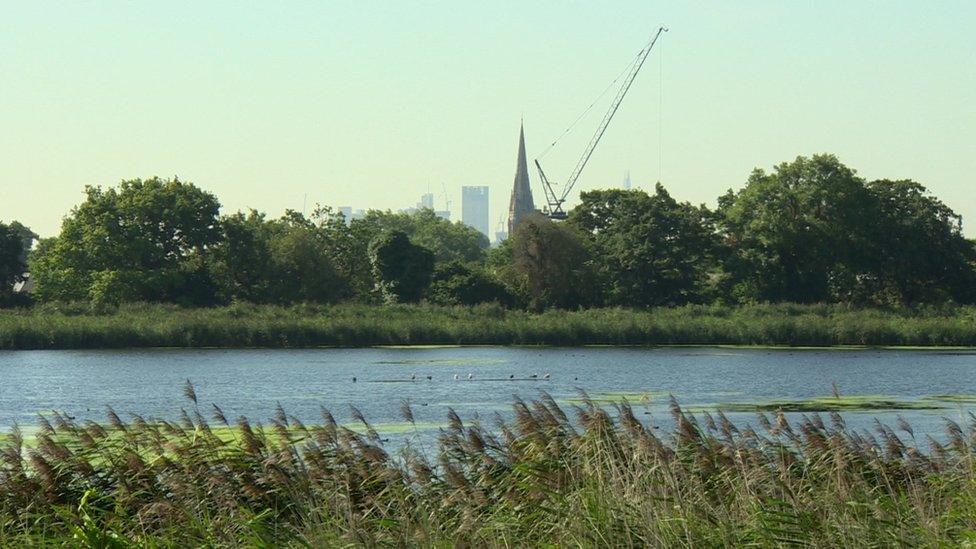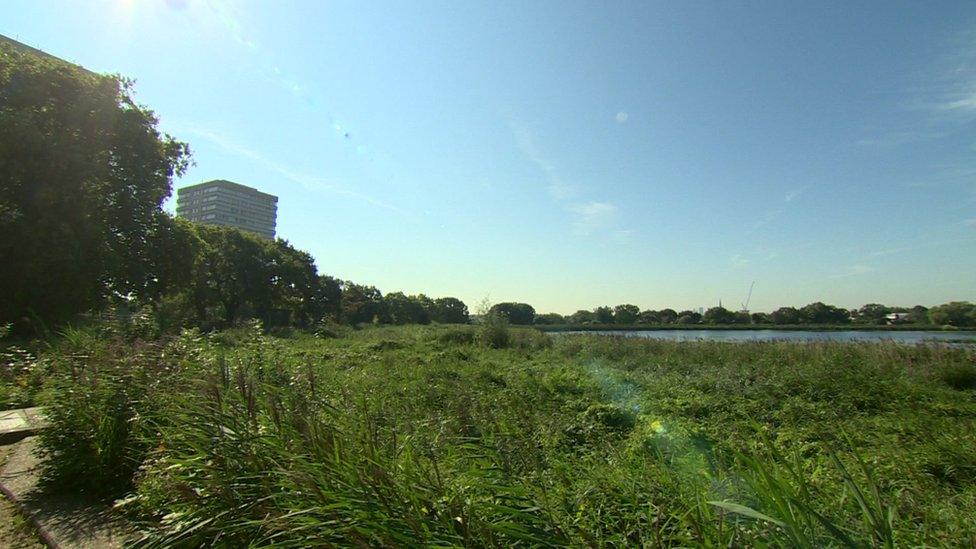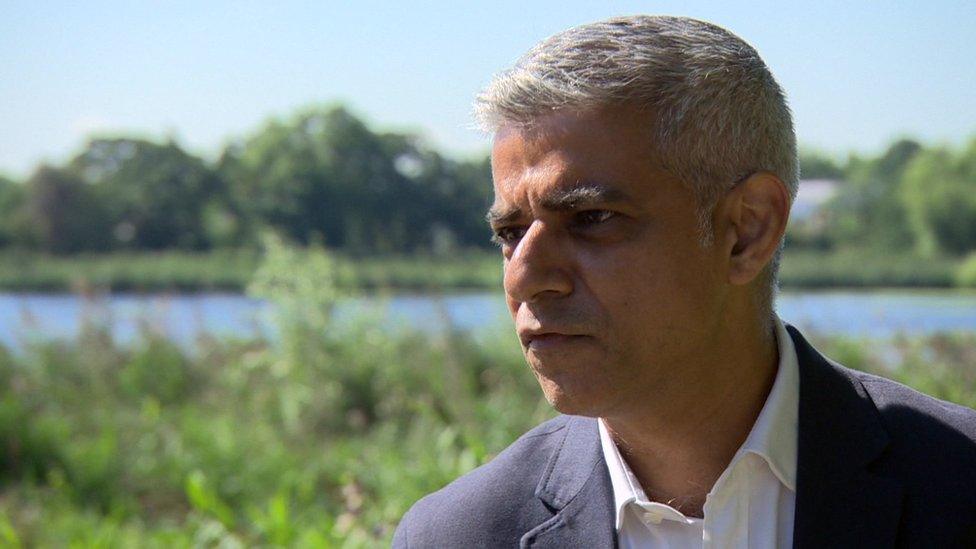London mayor launches bid to improve city's green credentials
- Published

The mayor wants to increase London's green space from 47% to 50% by 2050
London could become the world's first "national park city" by 2019, under plans set out by the city's mayor.
Sadiq Khan has unveiled a £9m greener city fund to help improve green spaces for communities, as he launched his draft environment strategy for the capital.
The funding will help make more than 50% of the capital's area green by 2050, he said.
Overall, 47% of London is currently green space.

The plan will see more parks and wildlife habitats protected
Proposals include:
Protecting and increasing the amount of parks and green spaces
Ensuring developments have more green roofs and walls (covered in grass and plants to help boost air quality) and rain gardens (small green spaces which help prevent flooding)
Protecting and increasing wildlife habitats
There are also plans to tackle air pollution and make London a "zero-carbon" city (producing a zero net of carbon emissions) by 2050.

Sadiq Khan unveiled the plans at Woodberry Wetlands on Friday
Unveiling the draft strategy at Woodberry Wetlands, north London, Mr Khan said: "London is home to outstanding green spaces that I want to protect, invest in and improve as we aim to become the world's first National Park City.
"We can also increase the amount of greenery in the city by installing many more green roofs and making our streets greener."
Under the plans, a "challenge map" will highlight areas that should be priorities for green infrastructure investment.

Analysis: Tom Edwards, BBC transport correspondent
The national park city is really a new policy badge on an environment strategy to emphasise what the mayor wants London to look like and where his long-term priorities lie.
It's an unusual concept and it has already been dismissed as a meaningless slogan.
But City Hall says the strategy will emphasise and prioritise London's green credentials and make it easier to protect and increase green space.
Planning regulations will encourage green roofs and green walls for example and cleaning London's air will be a priority.
These are very early days - it's not clear yet what the criteria for a national park city are and who will decide them.
And it faces many challenges, not least increasing green space when there is a huge demand for new housing.

- Published21 June 2015
